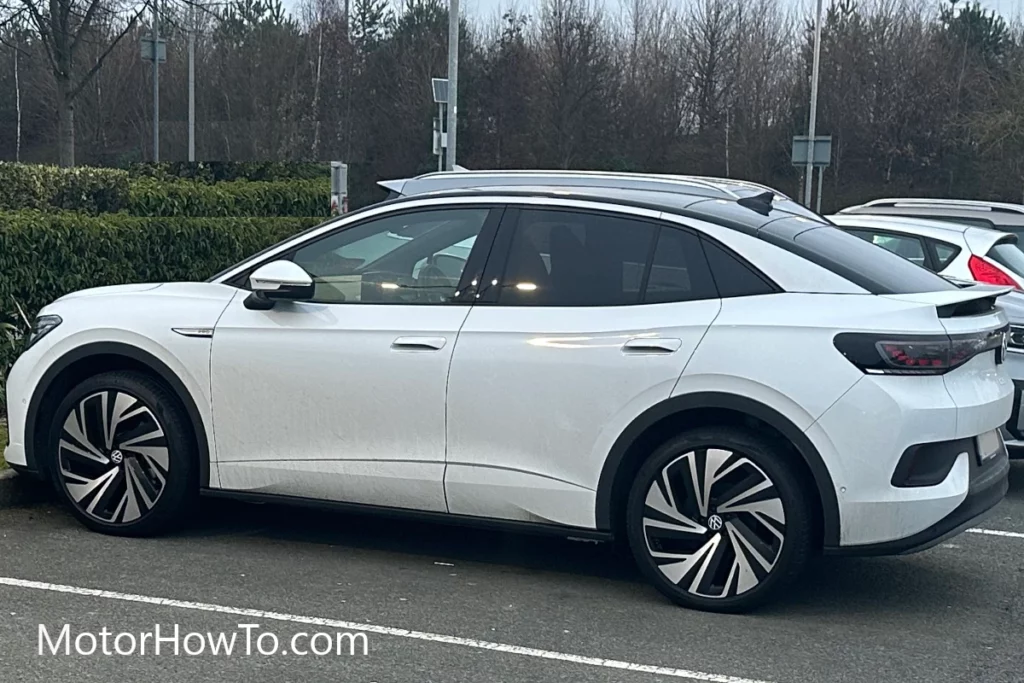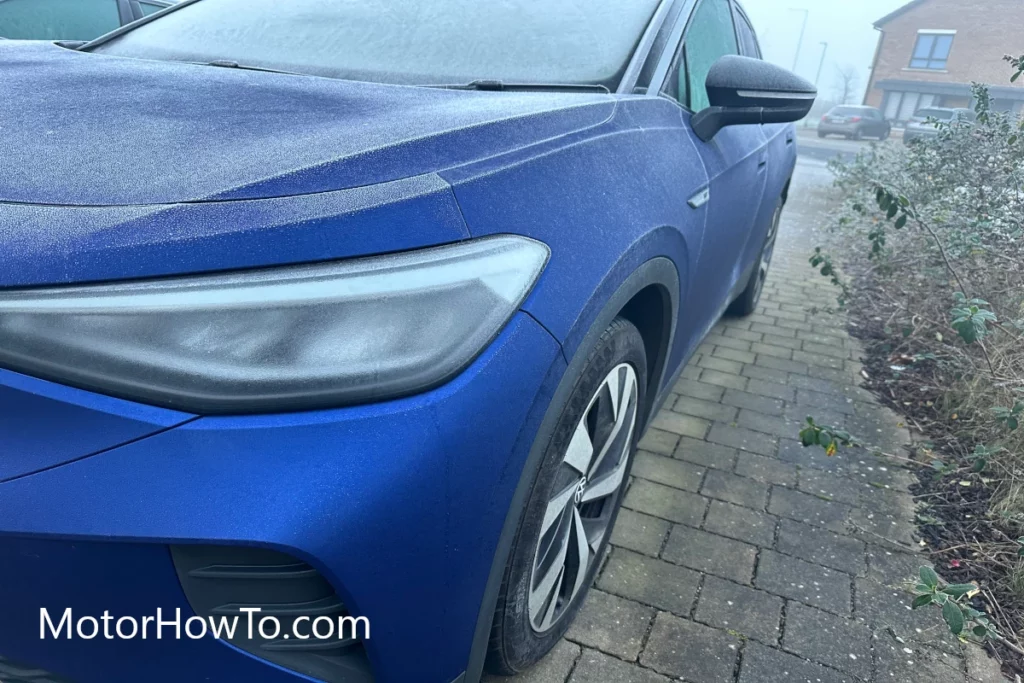Exploring the world of electric vehicles brings challenges and opportunities, particularly regarding towing.
With its innovative design and electric prowess, the Volkswagen ID series has entered this arena, presenting a unique blend of functionality and sustainability.
This article delves into the intricacies of towing with the VW ID, offering a comprehensive guide that balances capability with care.
We navigate through the technical aspects, safety guidelines, and practical tips, ensuring that your towing experience is efficient and aligns with these electric vehicles‘ advanced features.
The VW ID series can tow, adhering to specific weight limits and guidelines. It’s vital to follow VW’s safety and vehicle performance recommendations, including suitable accessories and driving tips for towing.

In the following sections, we will further dissect the capabilities of the VW ID in the context of towing.
We cover all the essential details, from understanding the maximum towing capacity to the impact on the vehicle’s range and battery life.
Additionally, we provide practical advice on equipping your VW ID for towing, including selecting compatible trailers and accessories.
Safety tips and maintenance advice will also be a key focus, ensuring your towing adventures are enjoyable and responsible.
Related:
- Navigating Urban Environments with Volkswagen ID (A City Driver’s Guide)
- How does VW ID Performs in Cold Weather (Efficiency & Range)
- Environmental Impact of Driving a Volkswagen ID (Answered)
Understanding the VW ID’s Towing Capacity
When understanding the towing capacity of the Volkswagen ID series, it’s essential to delve into the specifics of what these innovative electric vehicles can handle.
With its advanced electric powertrain, the VW ID offers a unique towing experience compared to traditional internal combustion engine vehicles.
The towing capacity of the VW ID varies depending on the model and configuration, making it crucial for owners to refer to their specific vehicle’s manual or specifications.
The VW ID’s towing capacity is carefully calibrated to balance the demands of towing with the efficiency and performance of an electric vehicle.
This balance is key to maintaining the vehicle’s integrity and longevity.
The electric motors in the VW ID provide instant torque, which is beneficial for towing.
However, it’s important to note that towing near the upper limit of the vehicle’s capacity can significantly affect its driving dynamics, battery range, and overall performance.
In addition to the model-specific limitations, the design of the VW ID plays a role in its towing capabilities.
The vehicle’s structure, battery placement, and weight distribution have been thoughtfully engineered to ensure towing stability and safety.
Owners should also consider the type of trailer or load being towed, as this can affect the vehicle’s handling and performance.
When considering towing with a VW ID, it is imperative to adhere to Volkswagen’s guidelines.
This includes staying within the recommended towing capacity and ensuring the vehicle has the appropriate towing gear.
By doing so, owners can enjoy the benefits of towing with an electric vehicle while preserving the vehicle’s performance and safety features.
Essential Accessories and Equipment for Towing
When preparing your Volkswagen ID for towing, it’s crucial to equip it with the right accessories and equipment.
These tools enhance the towing experience and ensure safety and compliance with legal requirements.
Each component facilitates a smooth and secure towing process, from tow bars to electrical kits.
Choosing high-quality, compatible accessories specifically designed for the VW ID is important to avoid any potential damage or safety issues.
Key Accessories and Equipment for Towing:
- Tow Bar: A robust tow bar compatible with the VW ID model is essential. It should be professionally installed and tested for stability and weight distribution.
- Electrical Kit: This kit connects the vehicle’s lighting system to the trailer, ensuring all lights (brake, turn signals, reverse) work in sync.
- Brake Controller: If you’re towing a heavy trailer, a brake controller is necessary to manage the trailer’s brake system effectively.
- Safety Chains: These provide an additional safety layer, keeping the trailer connected to the towing vehicle in case of hitch failure.
- Towing Mirrors: Extended side mirrors offer better visibility, which is crucial when towing wider trailers.
- Wheel Chocks: Used to secure the trailer’s wheels when parked, preventing unintentional rolling.
- Load-Leveling Equipment: Helps maintain proper vehicle balance and reduces strain on the rear.
Equipping your VW ID with these accessories and tools is the first step towards a safe and efficient towing experience. However, it’s equally important to check and maintain this equipment regularly.
Always inspect your towing setup before each journey, ensuring all components are in good working condition and correctly configured.
This attention to detail will prolong the life of your vehicle and equipment and ensure a safer towing experience for you and others on the road.
Impact on Battery Life and Vehicle Range

Towing with the Volkswagen ID, or any electric vehicle (EV), significantly impacts its battery life and overall range.
The additional weight and aerodynamic drag of towing a trailer require more energy, reducing the distance the vehicle can travel on a single charge. Understanding this impact is crucial for planning and executing towing activities without any unwelcome surprises.
Firstly, the increased load from towing puts more demand on the electric motors, leading to a higher battery consumption rate.
While robust and capable, the VW ID’s battery will deplete faster under towing conditions compared to standard driving scenarios.
This reduction in range can be quite substantial, depending on factors like the weight of the trailer, road conditions, and driving habits.
Aerodynamic drag also plays a significant role. Trailers, especially large or not aerodynamically designed, create significant wind resistance.
This resistance forces the vehicle to use more energy to maintain speed, thus further decreasing the battery range.
Additionally, the terrain over which the vehicle is driven impacts energy consumption.
Towing on uphill roads or in windy conditions requires more power while descending or flat terrains might be less demanding.
It’s also important to note that external factors, such as ambient temperature, can affect battery performance. Batteries tend to be less efficient in extremely cold or hot conditions, which could further reduce the driving range when towing.
For VW ID owners, planning for more frequent charging stops when towing is advisable. Utilizing route planning tools that include EV charging stations can be extremely helpful. Moreover, driving at moderate speeds and using regenerative braking effectively can help conserve battery life.
While the VW ID can tow, owners should be prepared for a notable decrease in range and plan their trips accordingly.
Regular battery health checks and mindful driving can help mitigate some of these effects, ensuring a more enjoyable and stress-free towing experience.
Safety Tips and Maintenance for Towing
Like any vehicle, towing with the Volkswagen ID requires adherence to specific safety protocols and maintenance routines to ensure a secure and efficient experience.
Safety is paramount, not just for the driver and passengers but also for other road users.
Regular maintenance of the vehicle and the towing equipment is crucial to avoid potential hazards.
The unique aspects of an electric vehicle like the VW ID, such as its battery system and electric motor, also necessitate special consideration in both these areas.
Before setting out, it’s essential to ensure that the vehicle is in good condition and that all towing equipment is properly installed and functioning. This includes checking the tow bar, electrical connections, and brakes.
While driving, it’s important to be aware of the increased stopping distance required when towing and to adjust your driving style accordingly.
The additional weight and altered vehicle dynamics can significantly affect handling and braking.
Regularly checking mirrors and being mindful of the larger turning radius are key safety practices while towing.
Safety Tips and Maintenance for Towing:
- Regular Inspection: Inspect your towing equipment for any wear or damage.
- Tire Pressure: Ensure the vehicle and trailer tires are inflated to the recommended pressure levels.
- Brake Checks: Regularly check the braking system of both the vehicle and the trailer.
- Battery Health: Keep an eye on the battery health of your VW ID, as towing can put additional strain on it.
- Weight Distribution: Properly balance the load in the trailer to avoid sway and maintain stability.
- Lighting System: Ensure that all lights on the vehicle and trailer function correctly for visibility and safety.
- Mirror Adjustment: Adjust mirrors to accommodate the increased width of your vehicle with the trailer.
After each towing session, you must thoroughly check your vehicle and the towing equipment.
Look for any signs of undue stress or wear, especially on the tow bar and hitch. Regular maintenance checks at a certified service center are also advisable to ensure the vehicle’s electric system, battery, and mechanical components function optimally.
Adhering to these safety tips and maintenance guidelines will not only extend the life of your VW ID and towing equipment.
Still, it will also contribute to a safer and more enjoyable towing experience.



